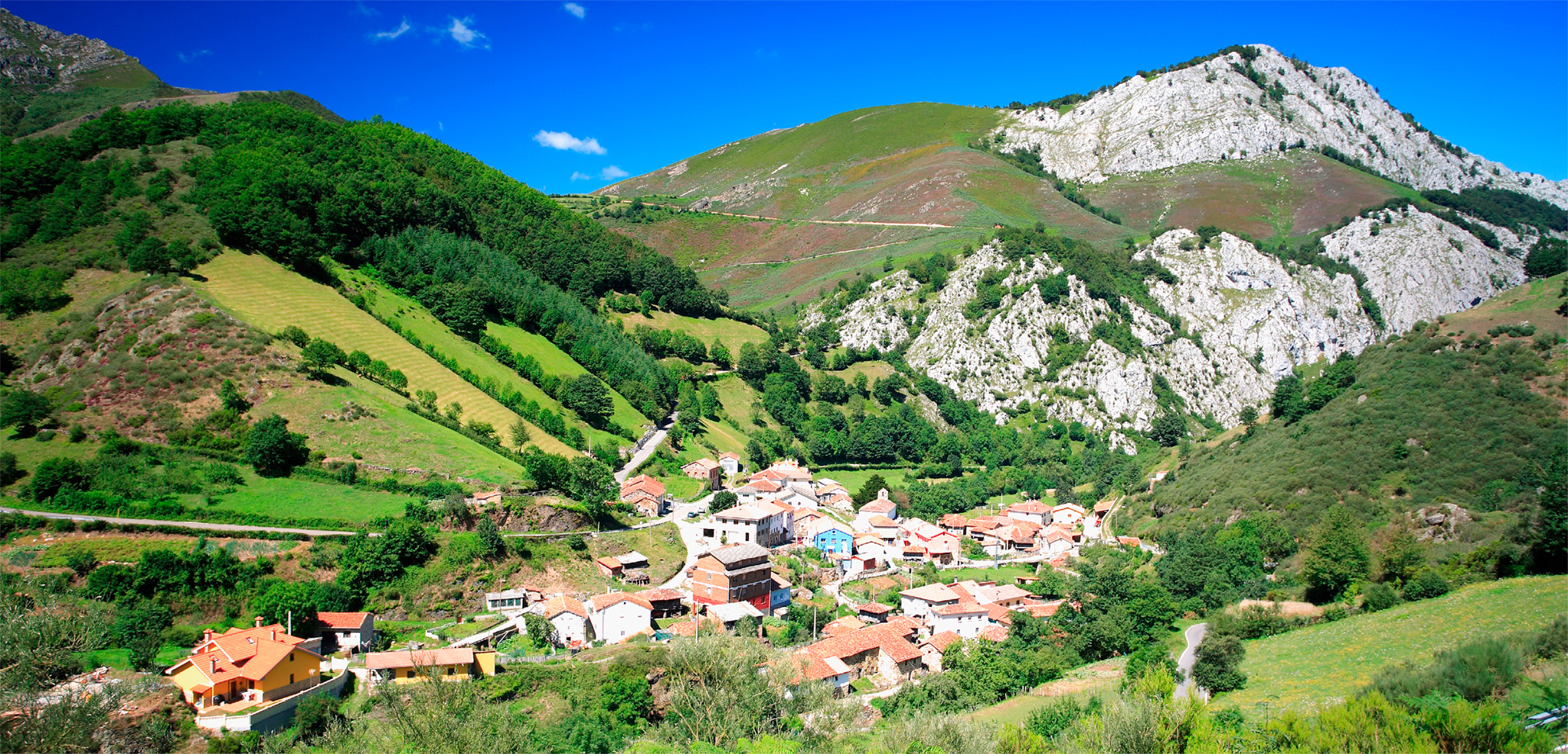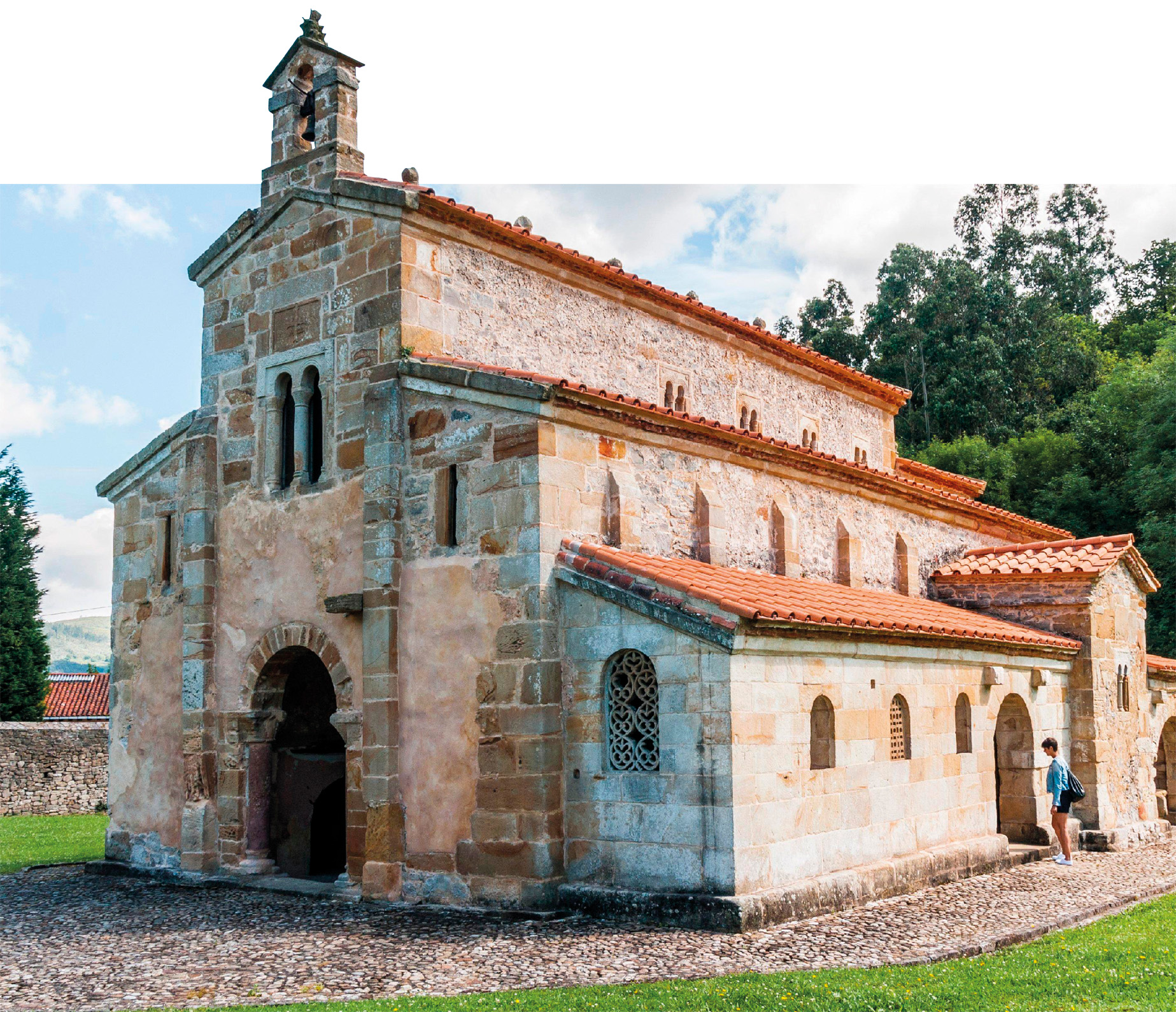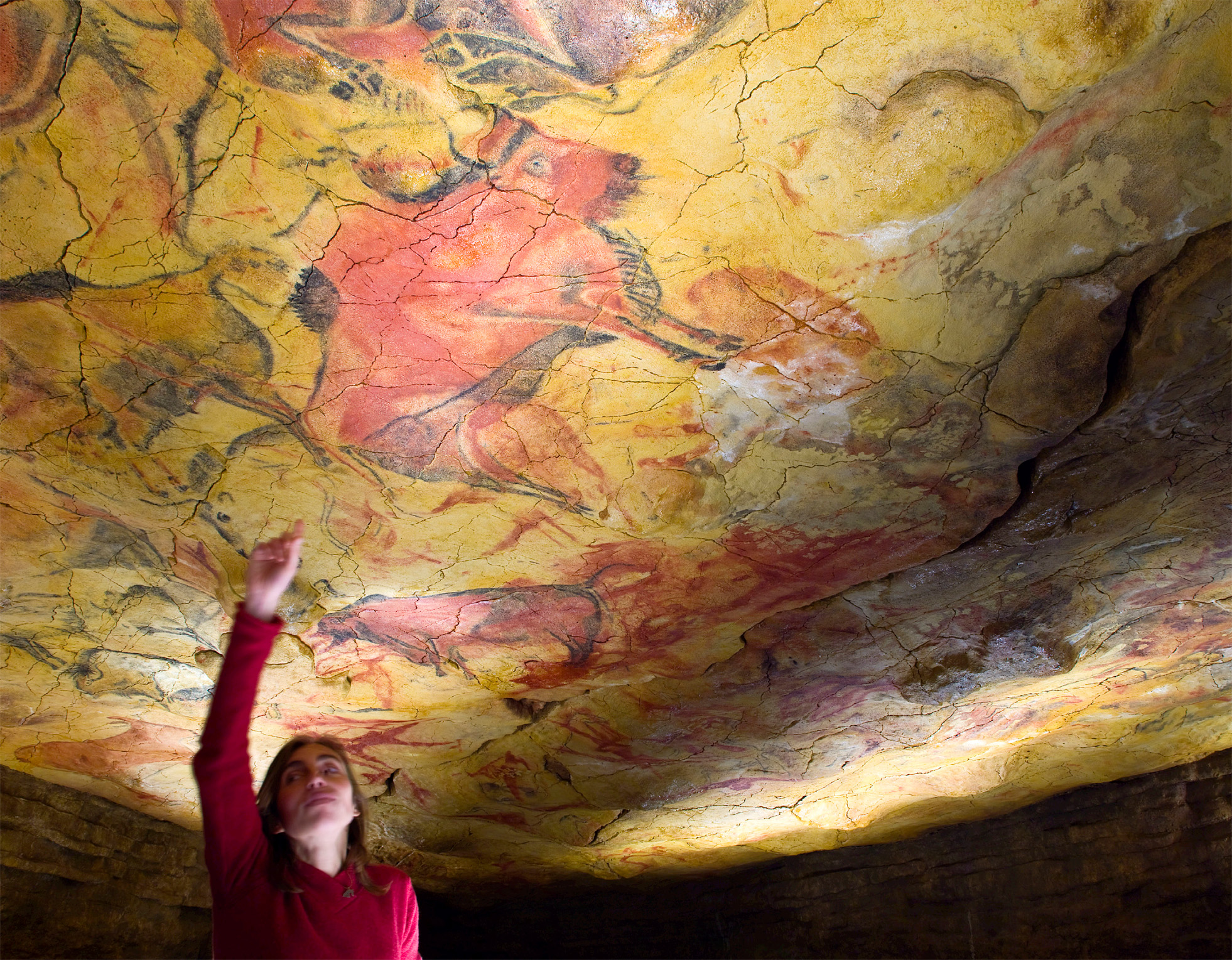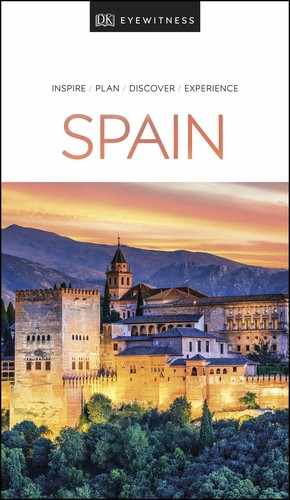Experience More
Situated in the remote Los Oscos region, this small village houses a rural tourism centre which organizes forest tours in four-wheel drive vehicles and has several hotels and holiday cottages to rent. Taramundi has a tradition of wrought-iron craftsmanship. Iron ore was first mined in the area by the Romans. There are approximately 13 forges in and around the village, where craftsmen can still be seen making traditional knives with decorated wooden handles.
The Brown Bear
The population of Spain’s brown bears (Ursus arctos) has dwindled from about 1,000 at the beginning of the 20th century to about 300 today. Hunting by man and the destruction of the bear’s habitat have caused the decline. But now, protected by nature reserves such as Teverga’s Parque Natural de Somiedo, where most of the Asturias’s bears are found, together with conservation laws, the bear is increasing in numbers again.

t Limestone peaks, carpeted with forests, rising above Taverga in the valley below
This area is rich in scenery, wildlife and ancient churches. Near the southern end of the Teverga gorge is La Plaza. Its church, Iglesia de San Pedro de Teverga, is a fine example of Romanesque architecture. West of La Plaza is Villanueva, with its Romanesque Iglesia de Santa María.
Nearby, the high meadows and forests of the Parque Natural de Somiedo are a sanctuary for brown bears. The Senda del Oso walking trail skirts the edge of the park.
One of the best-preserved prehistoric sites in the area, Castro de Coaña was later occupied by the Romans. On a hillside in the Navia Valley are the remains of its fortifications and the stone foundations of oval and rectangular dwellings. Inside can be found hollowed-out stones that are thought to have been used for crushing corn. The museum on the site displays many of the finds that have been unearthed at Castro de Coaña.
The aptly named “green coast” is a succession of attractive sandy coves and dramatic cliffs, punctuated by fishing villages. Inland, there are lush meadows, and pine and eucalyptus forests, backed by mountains.
Two pretty fishing ports, Castropol and Figueras, stand by the eastern shore of the Ría de Ribadeo, forming the border with Galicia. To the east are other picturesque villages such as Tapia de Casariego and Ortiguera, in a small rocky cove. Following the coast, Luarca lies beside a church on a headland, and has a neat little harbour. The village of Cudillero is even more delightful – cafés and restaurants crowd the tiny plaza beside the port and behind, white cottages are scattered over the hillsides.
Further along the coast is Cabo de Peñas where, in the fishing village of Candás, bullfights are held on the sand at low tide on 14 September. East of Gijón, Lastres is impressively located below a cliff, and Isla has a broad open beach. Beyond Ribadesella is the old fortified seaport of Llanes, which has ruined ramparts and good beaches.
EXPERIENCE Asturias and Cantabria
|
Eat V. Crespo An elegant place to try authentic Asturian cuisine; opt for the tasting menu. ⌂ Calle Periodista Adeflor 3, Gijón ∑ restaurantevcrespo.es ¡¡¡ Ronda 14 Go to Ronda 14 in Avilés for tapas with a twist. The chefs combine Japanese and Peruvian cuisine to create unique dishes. ⌂ Calle de Alfonso VII 20, Avilés ∑ ronda14.es ¡¡¡ |

t Medieval arcaded streets, lined with colourful buildings, at the centre of Avilés
Avilés became the capital of Asturias’ steel industry in the 1800s and is still ringed by big factories. The town hides a medieval heart of some character, especially around the Plaza de España. The Iglesia de San Nicolás Bari is decorated with frescoes and has a Renaissance cloister. The Iglesia de Padres Franciscanos contains a fine 14th-century chapel and holds the tomb of the first Governor of the US state of Florida. All around are arcaded streets.
EXPERIENCE Asturias and Cantabria

Costa Verde Beaches
Playa del Silencio
Near Castañeras, there are incredible views of the coastline cliffs.
Playa de Langre
Great beach for surfers, walkers and sunbathers.
Playa de Cuevas del Mar
Near Llanes, the caves are fun to explore.
Playa de San Lorenzo
A good family beach at Gijón, but it gets busy.
Playa de Santa Marina
This long sandy beach at Ribadesella makes for lovely walks.

t Gijón's old port, illuminated by street lamps in the evening
The province’s largest city, this industrial port has been much rebuilt since the Civil War when it was bombarded by the Nationalist navy. The city’s most famous resident is Gaspar Melchor de Jovellanos, an eminent 18th-century author, reformer and diplomat.
Gijon’s Old Town sits on a small headland, overlooking a popular beach. The Old Town centres on the arcaded Plaza Mayor and the 18th-century Palacio de Revillagigedo (Centro Cultural Cajastur), a Neo-Renaissance folly now housing a cultural centre. Even if there isn’t an exhibition on, it’s worth seeking out for its imposing façade.
Palacio de Revillagigedo (Centro Cultural Cajastur)
⌂ Plaza del Marqués 2 § 985 34 69 21 # For temporary exhibitions; Jul & Aug: 11am–1:30pm & 4–9pm Tue–Sat, noon–2:30pm Sun & public hols; Sep–Jun: 11:30am–1:30pm & 5–8pm Tue–Sat, noon–2pm Sun & public hols

t The interior of Santa María del Naranco, a pre-Romanesque church in Oviedo
Oviedo, a university city and the cultural and commercial capital of Asturias, stands on a raised site on a fertile plain. The nearby coal mines have made it an important industrial centre since the 19th century.
In and around Oviedo are many Pre-Romanesque buildings. This style flourished in the 8th–10th centuries and was confined to a small area of the kingdom of Asturias, one of the few enclaves of Spain not invaded by the Moors.
The nucleus of the medieval city is the stately Plaza Alfonso II, bordered by a number of handsome old palaces. On this square is situated the cathedral with its high tower and asymmetrical west façade. Inside are tombs of Asturian kings and a majestic 16th-century gilded reredos. The cathedral’s highlight is the Cámara Santa, a restored 9th-century chapel containing statues of Christ and the apostles. The chapel also has two crosses and a reliquary made of gold, silver and precious stones.
Also situated in the Plaza Alfonso II is the Iglesia de San Tirso. Originally constructed in the 9th century, subsequent restorations have left the east window as the only surviving Pre-Romanesque feature.
Behind the cathedral is the Museo Arqueológico de Asturias, housed in the old Benedictine monastery of San Vicente. It contains local prehistoric, Romanesque and Pre-Romanesque treasures.
The Museo de Bellas Artes, in Velarde Palace, has a range of Asturian and Spanish paintings, such as Carreño’s portrait of Carlos II and others by Greco, Goya, Dalí, Miró and Picasso.
Two of the most magnificent Pre-Romanesque churches are on Mount Naranco, to the north. Some of the intricate reliefs on the door jambs of San Miguel de Lillo show acrobats and animal tamers in a circus. Santa María del Naranco was originally built as a summer palace for Ramiro I in the 9th century. It is one of the finest examples of Pre-Romanesque architecture.
The early 9th-century church of San Julián de los Prados, on the road leading northeast out of Oviedo, is Spain’s largest surviving Pre-Romanesque church and is noted for its frescoes covering the interior.
Museo Arqueológico de Asturias
⌂ Calle San Vicente 3 # 9:30am–8pm Wed–Fri, 9:30am–2pm & 5–8pm Sat, 9am–3pm Sun & public hols ∑ museoarqueologicodeasturias.com
Museo de Bellas Artes
⌂ Calle Santa Ana 1 # Jul & Aug: 10:30am–2pm & 4–8pm Tue–Sat, 10:30am–2:30pm Sun; Sep–Jun: 10:30am–2pm & 4:30–8:30pm Tue–Fri, 11:30am–2pm & 5–8pm Sat, 11:30am–2:30pm Sun ∑ museobbaa.com
San Miguel de Lillo
⌂ Avenida de los Monumentos # Apr–Sep: 9:30am–1pm & 3:30–7pm Tue–Sat, 9:30am–1pm Mon & Sun; Oct–Mar: 10am–2:30pm Tue–Sat, 10am–12:30pm Mon & Sun
"
Santa María del Naranco
⌂ Avenida de los Monumentos # Apr–Sep: 9:30am–1pm & 3:30pm–7pm Tue–Sat, 9:30am–1pm Mon & Sun; Oct–Mar: 10am–2:30pm Tue–Sat, 10am–12:30pm Mon & Sun
Did You Know?
Legend says that Oviedo was founded by two monks, Maximo and Fromestano, in AD 761.
EXPERIENCE Asturias and Cantabria
|
STAY Hotel La Rectoral de Taramundi This lovely old stone building looks out onto forested hills. Book a room with a terrace to really make the most of those views. ⌂ Cuesta de la Rectoral s/n, Taramundi ∑ larectoral.com ¡¡¡ El Môderne Perfect for a boutique stay in Gijón, this chic hotel is housed in an old building, but is thoroughly modern. Suites available. ⌂ Calle del Marqués de San Esteban 27, Gijón ∑ elmodernehotel.com ¡¡¡ |
EXPERIENCE Asturias and Cantabria

Regional Fiestas
La Vijanera
This costumed parade has taken place in Silió on the first Sunday in January since pre-Roman times.
La Folía
On the second Sunday after Easter, a statue of the Virgen de la Barquera is put in a decorated boat in San Vicente de la Barquera, while groups of girls, called picayos, stand on the shore singing traditional songs.
Fiesta del Pastor
Regional dances are performed on the shores of Lake Enol in the Picos de Europa National Park on 25 July.
Battle of the Flowers
On the last Friday of August, floats adorned with flowers are paraded through Laredo.
Nuestra Señora de Covadonga
Crowds converge on the shrine of Covadonga to pay homage to the patron saint of Asturias on 8 September.
A small ancient town, with old balconied houses lining the river, Potes lies to the east of the Parque Nacional de los Picos de Europa. It is situated in the broad Valle de Liébana, whose fertile soil yields prime crops of walnuts, cherries and grapes. A potent spirit called orujo is made in the town. The Torre del Infantado, in the main square, is a defensive tower that was built in the 15th century.
Between Potes and the coast runs a spectacular gorge, the Desfiladero de la Hermida, with deep slopes of limestone sparsely covered with oak forests. Halfway up it is stone-built Santa María de Lebeña, a 10th-century Mozarabic church.
West of Potes is the monastery church of Santo Toribio de Liébana, one of the most revered spots in the area. Founded in the 7th century, it became known throughout Spain a century later when it received reputedly the largest fragment of the True Cross. The church is also known for being the home of St Beatus Liébana, the 8th-century monk who wrote the Commentary on the Apocalypse. The restored Romanesque monastic buildings are now occupied by Franciscan monks.

t Pre-Romanesque Iglesia de San Salvador in Valdedíos, set in a peaceful spot
Set alone in a field near this hamlet, the tiny 9th-century Iglesia de San Salvador is a jewel of pre-Romanesque art. Its ceiling has vivid Asturian frescoes, and by the portal are recesses where pilgrims slept. The church in the Monasterio de Santa María next door is 13th-century Cistercian, with cloisters from the 16th century.
To the north, Villaviciosa lies amid apple orchards. In nearby Amandi, the hilltop Iglesia de San Juan has delicate carvings.
Monasterio de Santa María
§ 985 90 59 05 # Apr–Sep: 11am–1:30pm & 4:30–7:45pm Tue–Sun; Oct– Mar: 11am–1:30pm Tue–Sun
Cangas de Onís, one of the gateways to the Picos de Europa, is where Pelayo, the 8th-century Visigothic nobleman and hero of the Reconquest, set up his court. The town has a Romanesque bridge and the 8th-century chapel of Santa Cruz.
About 3 km (2 miles) east in Cardes is the Cueva del Buxu, which has engravings and rock drawings over 10,000 years old. Only 25 visitors are allowed daily, and no visitors under the age of seven. Reservations in advance are essential.
" '
Cueva del Buxu
§ 608 17 54 67 (call 3–5pm Wed–Sun) # 10am–5pm Wed–Sun

t Sunset over the colourful houses of Ribadesella, looking out over the sea
Straddling a broad estuary, Ribadesella is an enchanting little seaside town. On one side is the lively old seaport, which now bustles with tasty tapas bars. While the other side of the estuary is home to a holiday resort. The most important event in the town’s calendar is the annual arrival of a multicoloured flotilla of kayaks from Arriondas on the first Saturday in August.
On the edge of town is the Cueva de Tito Bustillo. This cave is rich in stalactites but is best known for its many prehistoric drawings, some dating from around 18,000 BC. The 12 clusters of paintings include red and black pictures of stags and horses. To protect the paintings, only 360 visitors are allowed in per day; tickets should be booked in advance. There is a museum on the site, displaying faithful replicas.
" '
Cueva de Tito Bustillo
⌂ Ribadesella § 985 18 58 60 # Mar–Oct: 10:15am–5pm Wed–Sun (by guided tour only)

Picture Perfect
Flash (light) Required
It’s easy to forget that the vibrant paintings in the Cueva de Tito Bustillo are thousands of years old. Turn on your flash to capture proof of their brilliance.

t El Capricho, a building designed by Antoni Gaudí in Comillas
This pretty resort is known for its buildings by Modernista architects. Antonio López y López, the first Marquis of Comillas, hired Joan Martorell to design the Neo-Gothic Palacio Sobrellano (1881). Inside, the grand lounge has ornate wood-carved fireplaces decorated with Gaudí’s dragons, while the elaborate dining room features a gold ceiling of interlaced beams.
Comilla’s best-known building, however, is Gaudí’s El Capricho, now a restaurant. It was built from 1883 to 1889 and is a Mudéjar-inspired fantasy with a minaret-like tower covered in green and yellow tiles. The Universidad Pontificia is another Modernista building. It was designed by Joan Martorell to plans by Lluís Domènech i Montaner.
The fishing port of San Vicente de la Barquera, 10 km (6 miles) to the east is worth visiting for its arcaded streets and ramparts.
" '
Palacio Sobrellano
⌂ Barrio el Parque 8 § 942 72 03 39 # Apr–Oct: 9:30am–6:30pm daily (mid-Jun–mid-Sep: 9:30am–7:30pm daily); Nov–Mar: 9:30am–3:30pm daily
Sited high in the Cantabrian mountains, this winter resort lies below the Pico de Tres Mares (2,175 m/7,000 ft), the “Peak of the Three Seas”, so called because the rivers rising near it flow into the Mediterranean, the Atlantic and the Bay of Biscay. The Río Ebro, one of Spain’s longest rivers, rises in this area and its source, at Fontíbre, is a beauty spot. A road and a chair lift reach the summit of Tres Mares for a breathtaking panorama of the Picos de Europa and other mountain chains. The resort is small, with 22 pistes totalling 32 km (20 miles) in length, and has few facilities for après-ski.
Reinosa, some 26 km (16 miles) to the east of Alto Campoo, is a handsome market town with old stone houses. Further southeast is Retortillo, a hamlet where the remains of Julióbriga, a town built by the Romans as a bastion against the indigenous Cantabri, can be seen.
The main road south out of Reinosa leads to Cervatos, where the former collegiate church has erotic carvings on its façade. This novel device was meant to deter the villagers from earthly pleasures.
At Arroyuelo and Cadalso, to the southeast, are two churches built into rock faces in the 8th and 9th centuries.

t The market town of Reinosa, east of Alto Campoo
Two exceptionally picturesque towns, notable for their superb examples of rural architecture, draw visitors to the Cabuérniga Valley. The first of these towns is the once-remote Bárcena Mayor. Although it’s now easily reached by road, the town still has a time-warp atmosphere. Its cobbled streets, furnished with old lamps, are lined by pretty houses and cattle barns.
Carmona, which is located approximately 20 km (12 miles) to the northwest of Bárcena Mayor, is the valley’s second draw. Its solid stone houses, with pantiled roofs and wooden balconies, are typically Cantabrian. Woodcarving, the traditional craft of the region, is still practised in this village, where men work outside their houses on a variety of artifacts including bowls, fiddles, albarcas (clogs) and chairs. The 13th-century Palacio de los Mier, a manor house in the centre of the village, is being respectfully transformed into a hotel.
The extensive, wild beech woods near Saja, 13 km (8 miles) to the East of Bárcena Mayor, have been designated a nature reserve. Iberian wolves and brown bears have been sighted here and there are also colonies of griffon vultures.

t Prehistoric paintings in the Cuevas de Altamira replica cavern
These caves contain some of the world’s finest examples of prehistoric art. The earliest engravings and drawings, discovered in 1879, date back to around 30,000 BC. Public entry to the caves is restricted, but the on-site museum contains a three-dimensional replica based on scientific study of methods and materials used in prehistoric times. Visitors can get some insight into the habitat of its occupants and the beauty of the rock art they created there. There is also a programme of changing exhibitions.
Similar sites that are open to the public can be found at Puente Viesgo, Ribadesella and at Nerja in Andalucía.
EXPERIENCE Asturias and Cantabria
|
Drink Little Bobby Speakeasy This bar in Santander serves cocktails amid quirky decor. Clasic films play in the background. ⌂ Calle Sol 20, Santander ∑ littlebobby.es Pub la Lolita The chilled atmosphere makes this an ideal spot to relax and enjoy a quiet drink. ⌂ Calle Rio 2, Santillana del Mar Rvbicón An easy-going jazz bar where you can enjoy a drink while listening to live music. ⌂ Calle del Sol 4, Santander ∑ rubiconbar.es |
This spa village is best known for El Monte Castillo, a complex of caves dotted around the surrounding limestone hills. Late Palaeolithic cave dwellers used the complex as a sanctuary and left drawings of horses, bison and other animals, plus some 50 hand prints. The colours used to create the images were made from minerals in the cave.
To the southeast, in the Pas valley’s main town of Vega de Pas, you can buy two Pasiego specialities – sobaos, or sponge cakes, and quesadas, a sweet which is made from milk, butter and eggs.
"
El Monte Castillo
⌂ Puente Viesgo § 942 59 84 25 # Mar–Oct: 9:30am–2:30pm & 3:30–6:30pm Wed–Sun (mid-Jun–mid-Sep: 10:30am–2:30 pm & 3:30–7:30pm Tue–Sun); Nov–Feb: 9:30am–3:30pm Wed–Fri, 9:30am–2:30pm & 3:30–5:30pm Sat & Sun

t The futuristic exterior of Santander’s Centro Botín arts centre
Cantabria’s capital, a busy port, enjoys a splendid site near the mouth of a deep bay.The city has several museums: the MAS houses modern and contemporary artworks; the Museo de Prehistoria y Arqueología displays finds from caves at Altamira and Puente Viesgo; the Museo Marítimo has rare whale skeletons; and the Centro Botín hosts artistic workshops and exhibitions.
The town extends along the coast around the Península de la Magdalena, a headland on which sits a summer palace built for Alfonso XIII in 1912.
'
MAS
⌂ Calle Rubio 6 ¢ For renovation; check website ∑ www.museosantandermas.es
'
Museo de Prehistoria y Arqueología
⌂ Calle Bailén s/n § 942 20 99 22 # 10am–2pm & 5–7:30pm Tue–Sun
Museo Marítimo
⌂ Calle Severiano Ballesteros s/n § 942 27 49 62 # 10am–7:30pm Tue–Sun
" '
Centro Botín
⌂ Muelle de Albareda, Paseo de Pereda s / n # Oct–May: 10am–8pm Tue–Sun; Jun–Sep: 10am–9pm Tue–Sun (mid-Jul–Aug: 10am–9pm daily) ¢ 1 Jan, 25 Dec ∑ centrobotin.org

t Peering down a steep cobbled street in pretty Santillana del Mar
Set just inland, belying its name, this town is one of the prettiest in Spain. Its ensemble of 15th- to 18th-century stone houses has survived largely intact.
The town grew up around a monastery, which was an important pilgrimage centre, the Romanesque La Colegiata. The church houses the tomb of the local early medieval martyr St Juliana, and contains a 17th-century painted reredos and a carved south door. In its lovely cloisters, vivid biblical scenes have been sculpted on the capitals. On the town’s two main cobbled streets there are houses built by local noblemen. These have either fine wooden galleries or iron balconies, and coats of arms inlaid into their stone façades. One of these mansions, on the enchanting Plaza Mayor, has been turned into a parador, offering a luxurious stay.
To the east of the town centre is the Museo Diocesano, which is housed in the restored Convento de Regina Coeli. It has a collection of medieval and Baroque painted carvings of religious figures, and Spanish silverware.
"
Museo Diocesano
⌂ El Cruce § 942 84 03 17 # 10am–1:30pm & 4–6:30pm Tue–Sun

Hidden Gem
Sandy Justa
Hidden away in a corner of Santillana del Mar is the peaceful Santa Justa beach. A walk along this stretch of sand will take you to the Ermita de Santa Justa – a church tucked into a cove.
Its long, sandy beach has made Laredo one of Cantabria’s most popular bathing resorts. The attractive Old Town has narrow streets with balconied houses leading up to the 13th-century Iglesia de Santa María de la Asunción, with its Flemish altar and bronze lecterns. Try to time your visit with the Battle of the Flowers, which takes place in August.
Castro Urdiales, a busy fishing town and popular holiday resort, is built around a picturesque harbour. Above the port, on a high promontory, stands the pinkish Gothic Iglesia de Santa María, as big as a cathedral. Beside it, the restored castle, said to have been built by the Knights Templar, has been converted into a lighthouse. Handsome glass-fronted houses, or galerías, line the promenade. The town’s small beach often becomes crowded, but there are bigger ones to the west, such as the Playa de Ostende.
Near the village of Ramales de la Victoria, 40 km (25 miles) south, are prehistoric caves containing etchings and engravings, reached by a very steep mountain road.
EXPERIENCE Asturias and Cantabria
|
Eat El Marqués Set on the riverbank, this eatery offers an à la carte menu, as well as a huge variety of tapas. Seafood is their speciality. ⌂ Calle Manuel Pérez Mazo 0, Puente Viesgo § 648 09 22 12 ¡¡¡ La Vinoteca This fusion restaurant serves a lot of Spanish dishes, but often with international influences. ⌂ Calle Hernan Cortes 38, Santander § 942 07 57 41 ¡¡¡ |
